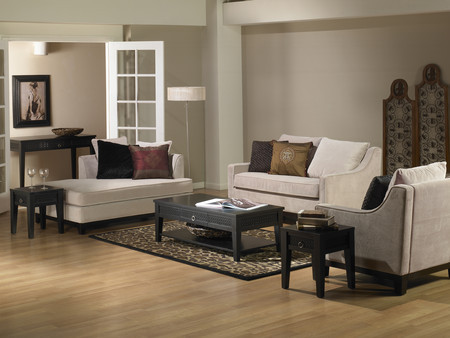Start with the basics for any decorating project
"A journey of a thousand miles must begin with a single step." Chinese proverb
For my regular readers, you may remember that I have a list of decorating tips and that around the first of each year I share some of them again. They are basic and never really change that much. Instead of doing a full blown list for you this month, I want to start the new year with some basic steps, or Decorating 101.
Whether you are a first-time homeowner, renter or a homeowner who wants an entirely new look, you need to remember the basics. There are a lot of questions about how to get started, furniture selection, painting and what styles to choose.
If you watch television at all, you can't help but run across the programs that offer makeovers and how-to ideas. As we all know, HGTV is a staple for those of us hooked on decorating and home improvement, and many other networks offer their own programming. If you go to the newsstand, there are probably 20 or so magazines offering the same advice. Each of these publications and programs gives its own spin on decorating and we, as consumers, seem to have an insatiable appetite for it. So, the ideas keep coming.
Caution, caution, caution
Very often you see things in magazines or on TV and you say to yourself, "That would never work in my home," and it may not. Or, "I would like that but I can't afford it"; "That's way too much color, too small, too big, hate the fabric, not the right style," etc. So we're going to explore what is right for you and how you can achieve it. The main thing to keep in mind when getting ideas from magazines or TV is that cameras can work miracles. The view that you see may have little to do with reality.
The main thing to remember when you are getting ready to redo your whole house, your first house or just buy a new sofa or lamp is that you must have fun with the project and, contrary to some opinions, you must be happy with the results. This is your space, your life and it's your money.
Most people's biggest objection to hiring a professional designer or decorator is that the professional imposes her or his tastes on the consumer and when the project is finished, it looks like them, not you. Even if you are hiring a decorator or designer, know your style and likes and dislikes first. Take the time to get educated.
Before you start
Read magazines, check out those television programs, prowl around in stores and arm yourself with as much information as possible. You also need to know your space. Measure, measure, measure. Exact measurements are a must if you are to have a successful project.
It is rare that a decorating project is stand-alone. You usually have a view from one room to another so if you are painting or planning big pieces of upholstery, pay attention to the room colors in adjoining spaces. Different colors and patterns are great as long as they don't make your eyes cross if you see them together.
The first step
Usually the first step in any re-do or first-do is paint. It is the least expense and the easiest to achieve. Even if you want to add paper or other decorative finishes later, paint is most likely your first project.
Unless you are trying to match a pattern in your china or a long time treasure, you are usually not positive of the exact paint color. It pays to first look at as many paint samples in the color family you like. If you haven't looked in the paint store lately, you will be shocked. There are millions of colors to choose from, and color can be very deceptive. Light and other colors found in upholstery or woods can affect the color.
I would recommend that you spend the money and buy small cans of several shades of paint that you decide on. Paint small areas on your walls and leave it on for at least 24 hours so you can see the color at night, with sunlight, shadow, etc. It's worth the investment in the long run.
My personal favorite step in this process is to buy large poster board, preferably a minimum size of 2-by-3 feet. Paint the paper and not the walls -- and move the paper around the room. Look at it in the morning with full sun coming in; check out afternoon shadows; and look closely with your night lighting. The beauty of using the poster board is that you can move it around to see how it looks next to your kitchen cabinets, your favorite pieces of furniture, etc.
If a new space or refurbished space is in your future, learn these basics. They will serve you well.
And on a personal note, for me, working with a first-time homebuyer, figuring out his or her likes and style and helping her or him make the space how he or she wants it to be, is one of the most rewarding projects a designer can have. I'm experiencing a project like that right now and it makes me realize that the basics never get old.
If you would like to have the complete list of my design tips, send me an e-mail.
Carolyn Muse Grant is a founder and immediate past president of the Architectural & Decorative Arts Society, as well as an interior design consultant/stylist specializing in home staging. Send questions to creativemuse@cox.net.




























